 W
WElectronic toll collection (ETC) is a wireless system to automatically collect the usage fee or toll charged to vehicles using toll roads, HOV lanes, toll bridges, and toll tunnels. It is a faster alternative which is replacing toll booths, where vehicles must stop and the driver manually pays the toll with cash or a card. In most systems, vehicles using the system are equipped with an automated radio transponder device. When the vehicle passes a roadside toll reader device, a radio signal from the reader triggers the transponder, which transmits back an identifying number which registers the vehicle's use of the road, and an electronic payment system charges the user the toll. A major advantage is the driver does not have to stop, reducing traffic delays. Electronic tolling is cheaper than a staffed toll booth, reducing transaction costs for government or private road owners. The ease of varying the amount of the toll makes it easy to implement road congestion pricing, including for high-occupancy lanes, toll lanes that bypass congestion, and city-wide congestion charges. The payment system usually requires users to sign up in advance and load money into a declining-balance account, which is debited each time they pass a toll point.
 W
WThe M6 Toll, referred to on signs as the Midland Expressway, and stylised as M6toll, connects M6 Junction 3a at the Coleshill Interchange to M6 Junction 11A at Wolverhampton with 27 miles (43 km) of six-lane motorway.
 W
WAutomatic number-plate recognition is a technology that uses optical character recognition on images to read vehicle registration plates to create vehicle location data. It can use existing closed-circuit television, road-rule enforcement cameras, or cameras specifically designed for the task. ANPR is used by police forces around the world for law enforcement purposes, including to check if a vehicle is registered or licensed. It is also used for electronic toll collection on pay-per-use roads and as a method of cataloguing the movements of traffic, for example by highways agencies.
 W
WAutopass is an electronic toll collection system used in Norway. It allows collecting road tolls automatically from cars. It uses electronic radio transmitters and receivers operating at 5.8 GHz (MD5885) originally supplied by the Norwegian companies Q-Free and Fenrits. Since 2013 Kapsch and Norbit supplied the transponders. In 2016 the Norwegian Public Roads Administration revealed that they had chosen Norbit and Q-Free as suppliers of Autopass-transponders the next four years.
 W
WAutotoll Limited (Autotoll) provides Electronic Toll Collection (ETC) service in Hong Kong.
 W
WBroBizz is a Danish system for electronic toll collection. It was established in 2008 and BroBizz A/S develops and manages the concept. BroBizz A/S is 100% owned by Sund & Bælt Holding A/S.
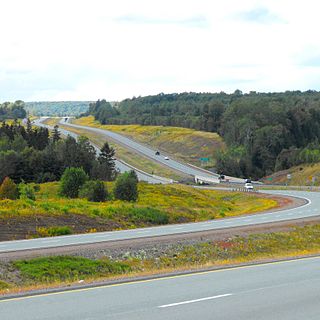 W
WThe Cobequid Pass is the name given to a 45 km (28 mi) tolled section of Nova Scotia Highway 104 between Thomson Station, Cumberland County and Masstown, Colchester County in the Canadian province of Nova Scotia. The section is a public–private partnership; the highway is owned by the Highway 104 Western Alignment Corporation, a Crown corporation of the Government of Nova Scotia, with a toll plaza operated under contract by Atlantic Highway Management Corporation Limited, a subsidiary of Aecon Concessions. The toll plaza is located near the halfway point in Londonderry.
 W
WCongestion pricing or congestion charges is a system of surcharging users of public goods that are subject to congestion through excess demand, such as through higher peak charges for use of bus services, electricity, metros, railways, telephones, and road pricing to reduce traffic congestion; airlines and shipping companies may be charged higher fees for slots at airports and through canals at busy times. Advocates claim this pricing strategy regulates demand, making it possible to manage congestion without increasing supply.
 W
WThe Crescent City Connection (CCC), formerly the Greater New Orleans Bridge (GNO), is twin cantilever bridges that carry U.S. Highway 90 Business over the Mississippi River in New Orleans, Louisiana, United States. They are tied as the fifth-longest cantilever bridges in the world. Each span carries four general-use automobile lanes; additionally the westbound span has two reversible HOV lanes across the river.
 W
WThe Dartford-Thurrock River Crossing, commonly known as the Dartford Crossing and until 1991 the Dartford Tunnel, is a major road crossing of the River Thames in England, carrying the A282 road between Dartford in Kent in the south and Thurrock in Essex in the north. It consists of two bored tunnels and the cable-stayed Queen Elizabeth II Bridge. The only fixed road crossing of the Thames east of Greater London, it is the busiest estuarial crossing in the United Kingdom, with an average daily use of over 130,000 vehicles. It opened in stages: the west tunnel in 1963, the east tunnel in 1980 and the bridge in 1991. The crossing, although not officially designated a motorway, is considered part of the M25 motorway's route, using the tunnels northbound and bridge southbound. Described as one of the most important road crossings in Britain, it suffers from heavy traffic and congestion.
 W
WThe Dartford-Thurrock River Crossing, commonly known as the Dartford Crossing and until 1991 the Dartford Tunnel, is a major road crossing of the River Thames in England, carrying the A282 road between Dartford in Kent in the south and Thurrock in Essex in the north. It consists of two bored tunnels and the cable-stayed Queen Elizabeth II Bridge. The only fixed road crossing of the Thames east of Greater London, it is the busiest estuarial crossing in the United Kingdom, with an average daily use of over 130,000 vehicles. It opened in stages: the west tunnel in 1963, the east tunnel in 1980 and the bridge in 1991. The crossing, although not officially designated a motorway, is considered part of the M25 motorway's route, using the tunnels northbound and bridge southbound. Described as one of the most important road crossings in Britain, it suffers from heavy traffic and congestion.
 W
WThe Durham City congestion charge was the first congestion charge to be introduced in the UK in October 2002.
 W
WThe Central Florida Expressway Authority (CFX) is a highway authority responsible for construction, maintenance and operation of toll roads in five counties of Greater Orlando. It was created in 2014 to replace the Orlando–Orange County Expressway Authority (OOCEA), which only had authority in Orange County, and as of 2016 no roads outside that county have been added to the system. Other toll roads in the area are operated by Florida's Turnpike Enterprise and the Osceola County Expressway Authority; with the latter of which possibly merging into CFX some time after 2018.
 W
We-TAG is a free-flow tolling electronic toll collection system used on all tollways throughout Australia. It was originally developed by Transurban for use on their CityLink tollway in the late 1990s, with the system since adopted by all toll roads, bridges and tunnels in Australia. The technology has different names depending on the issuer - such as Eastlink, Linkt (Queensland), E-toll and E-way, however these are all interchangeable across Australia and no surcharges apply for use on other operators' toll roads.
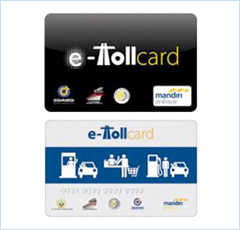 W
We-toll or e-toll card is a contactless smart card used by Indonesian toll road drivers to pay the toll fee. The card is issued by Bank Mandiri in cooperation with 3 toll operators. This card used the RFID system.
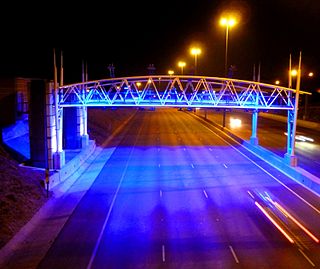 W
We-toll consists of the electronic toll collection (ETC) processes employed by South Africa's roads agency SANRAL on selected toll roads or toll lanes, subject to the Sanral Act of 1998. SANRAL derives its income both from toll income and the national fiscus, while initial capital outlay for large projects are funded by open market bond issues. In total SANRAL manages 13,000 km of non-toll roads in South Africa, besides the majority of its toll roads, including 187 km of Gauteng's freeways which are subject to e-toll.
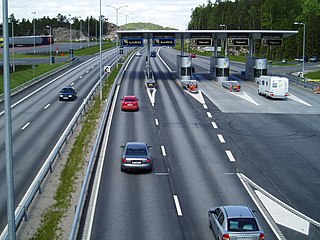 W
WEasyGo is a joint venture between Norway, Sweden, Denmark and Austria, that enables use of a single electronic toll tag on toll roads, ferries and bridges in all the member countries. The purpose of EasyGo is to enable the use of one OBE for payment when driving through any toll facility one might encounter on the way through Northern Europe and Austria.
 W
WeFlow is the tolling brand name of Irish company Emovis which manages the collection of tolls electronically. It is best known for operating the "barrier-free" tolling system which was introduced on the M50 motorway around Dublin on 30 August 2008.
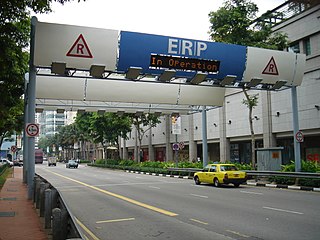 W
WThe Electronic Road Pricing (ERP) system is an electronic toll collection scheme adopted in Singapore to manage traffic by way of road pricing, and as a usage-based taxation mechanism to complement the purchase-based Certificate of Entitlement system.
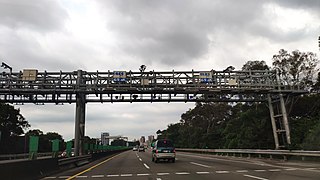 W
WTaiwan Highway Electronic Toll Collection System is used to electronically collect tolls on national freeways in Taiwan. All tolls are collected electronically by overhead gantries with multi-lane free flow, not at traditional toll booths. Taiwan was the first country to switch from manual tolling to all-electronic, multi-lane free-flow tolling on all of its freeways.
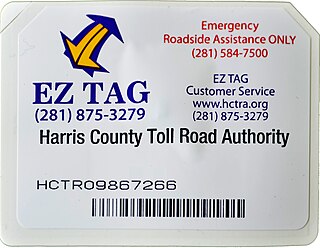 W
WEZ TAG is an electronic toll collection system in Houston, Texas, United States, that allows motorists to pay tolls without stopping at toll booths. Motorists with the tags are allowed to use lanes reserved exclusively for them on all Harris County Toll Road Authority (HCTRA) roads. As of late 2003 the EZ TAG can also be used on all lanes of tolled roadways in Texas that accommodate electronic toll collection.
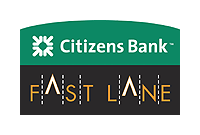 W
WFast Lane was the original branding for the electronic toll collection system used on toll roads in Massachusetts, including the Massachusetts Turnpike, Sumner Tunnel, Ted Williams Tunnel, and Tobin Bridge. It was introduced in 1998, and later folded into the E-ZPass branding in 2012. Fast Lane transponders were fully interoperable with member agencies of the E-ZPass Interagency Group, however Fast Lane transponders afford users discounted tolls in some junctions that out-of-state users are not offered.
 W
WFasTrak is the electronic toll collection (ETC) system used in the state of California in the United States. The system is used statewide on all of the toll roads, toll bridges, and high-occupancy toll lanes along the California Freeway and Expressway System.
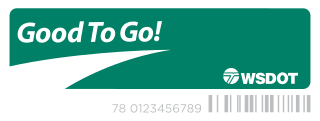 W
WGood to Go, stylized as Good To Go!, is the electronic toll collection system used by the Washington State Department of Transportation on all current toll projects in the U.S. state of Washington. Good to Go customers prepay a balance into an account and the tolls are then electronically deducted as the customer passes through an electronic toll collection location. Vehicles that are not linked to an account are photographed and a toll bill is sent to the registered owner by U.S. mail. The system debuted in July 2007 on the new Tacoma Narrows Bridge and is a part of the high-occupancy toll (HOT) lanes on State Route 167, which opened in the spring of 2008. All-electronic tolling began on the SR 520 Bridge on December 29, 2011. The Good to Go system is similar to other electronic tolling technology already in place around the country such as FasTrak in California and E-ZPass in the eastern United States.
 W
WThe Gothenburg congestion tax, also referred to as the Gothenburg congestion charge, is a congestion pricing system implemented as a tax levied on most vehicles entering and exiting central Gothenburg, Sweden, including some main roads passing by the city. The congestion tax was introduced on January 1, 2013, with the Stockholm congestion tax as a model.
 W
WA high-occupancy toll lane is a type of traffic lane or roadway that is available to high-occupancy vehicles and other exempt vehicles without charge; other vehicles are required to pay a variable fee that is adjusted in response to demand. Unlike toll roads, drivers have an option to use general purpose lanes, on which a fee is not charged. Express toll lanes, which are less common, operate along similar lines, but do not exempt high-occupancy vehicles.
 W
WI-Pass is the electronic toll collection system utilized by the Illinois State Toll Highway Authority (ISTHA) on its toll highways that launched on November 18, 1993, with the opening of Interstate 355. It uses the same transponder as the E-ZPass system used in the Northeastern US, the Chicago Skyway, and the Indiana Toll Road, along with the Indiana State Road 912 Indiana Harbor and Ship Canal bridge.
 W
Wi-Zoom was the former name for the electronic toll collection system used on the Indiana Toll Road (ITR), which now uses the E-ZPass system. On June 27, 2007, the system was implemented from mile 1 to mile 23 of the road under the unique branding of "i-Zoom", which was fully compatible with E-ZPass and the Illinois State Toll Highway Authority's I-Pass system; the remaining toll plazas came online on April 1, 2008, with increased cash toll rates. i-Zoom transponders were then made available for purchase at service plazas and CVS/pharmacy locations in northern Indiana. As of September 2012, the i-Zoom branding was retired by the ITR for the universal E-ZPass branding used by most states in the E-ZPass system; outside of the implementation of a transponder with a smaller form factor and the removal of the i-Zoom logo from post-September 2012 transponder units, along with a website upgrade in 2014, no other changes to transponders or accounts are planned.
 W
WThe London congestion charge is a fee charged on most cars and motor vehicles being driven within the Congestion Charge Zone (CCZ) in Central London between 7:00 am to 10:00 pm seven days a week.
 W
WThe Ultra Low Emission Zone is a fee charged to the most polluting vehicles in Central London. Plans were laid out under Boris Johnson and introduced by Sadiq Khan on 8 April 2019. It led to the number of the worst polluting vehicles dropping from 35,600 to 23,000 and a 20% reduction in emissions in Central London.
 W
WThe London Low Emission Zone (LEZ) is a traffic pollution charge scheme with the aim of reducing the exhaust gas emissions of diesel-powered vehicles in London. The scheme applies London-wide to commercial vehicles, and should not be confused with the Ultra Low Emission Zone (ULEZ), introduced in April 2019, which applies to all vehicles in Central London. Vehicles that do not conform to various emission standards are charged; the others may enter the controlled zone free of charge. The low emission zone started operating on 4 February 2008 with phased introduction of an increasingly stricter regime until 3 January 2012. The scheme is administered by the Transport for London executive agency within the Greater London Authority.
 W
WOpen road tolling (ORT), also called all-electronic tolling, cashless tolling, or free-flow tolling, is the collection of tolls on toll roads without the use of toll booths. An electronic toll collection system is usually used instead. The major advantage to ORT is that users are able to drive through the toll plaza at highway speeds without having to slow down to pay the toll. In some installations, ORT may also reduce congestion at the plazas by allowing more vehicles per hour/per lane. The disadvantage to ORT is the possibility of "leakage"; that is, "violators" who do not pay. Leakage may either be written off as an expense by the toll operator, or offset in part or whole by fees and fines collected against the violators.
 W
WPalmetto Pass is an electronic toll-collection system used on all tolled roads in South Carolina. It is administered by the South Carolina Department of Transportation.
 W
WOklahoma has an extensive turnpike system, maintained by the state government through the Oklahoma Turnpike Authority. All of Oklahoma's turnpikes are controlled-access highways. The majority have at least four lanes, though the Chickasaw Turnpike is two lanes.
 W
WSalik is the name given to the electronic toll road system in Dubai, United Arab Emirates, which is based on RFID technology, automatically deducting a fee when a toll gate is passed under. The Salik toll was launched by Dubai's Dubai Roads and Transport Authority (RTA) on 1 July 2007.
 W
WThe Severn TAG was a payment system for collecting bridge tolls for drivers using either the Severn Bridge Crossing or the Second Severn Crossing over the Severn Estuary between England and Wales.
 W
WA smart interchange is a feature of Japanese expressways that provides exclusive access to and from the expressway for vehicles equipped with electronic toll collection (ETC). The feature increases accessibility to and from the expressway in less-populated areas while cutting construction and maintenance costs. Smart interchanges can be built by adding connector roads between local roads and pre-existing service areas, parking areas, or bus stops located along expressways or by building simpler interchanges than were previously implemented in Japan.
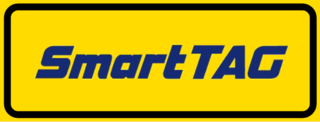 W
WSmartTAG is an on-board unit (OBU) vehicle-based device used as an electronic toll collection (ETC) system over long distances to complement Touch 'n Go, a card-based system. It was first introduced in Malaysia in 1999 and is also used as an Entrance Access Security.
 W
WThe Stockholm congestion tax, also referred to as the Stockholm congestion charge, is a congestion pricing system implemented as a tax levied on most vehicles entering and exiting central Stockholm, Sweden. The congestion tax was implemented on a permanent basis on August 1, 2007, after a seven-month trial period between January 3, 2006 and July 31, 2006. It was inspired by Singapore's Electronic Road Pricing (ERP) system, which first introduced it in 1975.
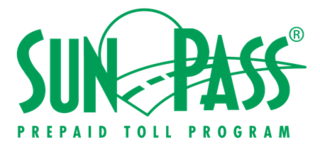 W
WSunPass is an electronic toll collection system within the U.S. state of Florida. It was created by the Florida Department of Transportation's Office of Toll Operations, now a division of Florida's Turnpike, in 1999. The system utilizes windshield-mounted RFID transponders manufactured by TransCore and lane equipment designed by companies including TransCore, SAIC, and Raytheon. SunPass is fully interoperable with E-Pass, O-Pass, LeeWay and the Miami-Dade Expressway Authority (MDX) toll roads.
 W
WTelepass is the brand name for an electronic toll collection system used to collect toll (pedaggio) on motorways (autostrade) in Italy operated by Autostrade per l'Italia S.p.A., its affiliates, and other legal entities. The system was introduced in 1989.
 W
WTeras Teknologi Sdn Bhd (TERAS), a subsidiary of PLUS Malaysia Berhad (PMB), is a Malaysian global corporation based in Petaling Jaya.
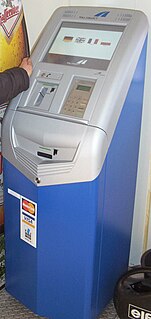 W
WToll Collect GmbH is a German company that has developed and is running the tolling system for trucks (LKW-Maut) on German motorways.
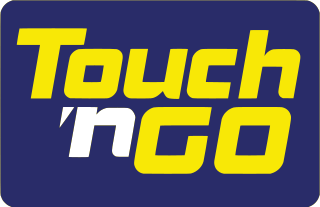 W
WThe Touch 'n Go smart card is used by Malaysian toll expressway and highway operators as the sole electronic payment system (EPS). The credit card-sized smart card is made of plastic with Philips' MIFARE Classic microchip technology embedded in it.
 W
WTouch 'n Go eWallet is a Malaysian digital wallet and online payment platform, established in Kuala Lumpur, Malaysia, in July 2017 as a joint venture between Touch 'n Go and Ant Financial. It allows users to make payments at over 280,000 merchant touch points via QR code; pay for tolls, street parking, payment on e-hailing, car-sharing apps or taxis via RFID or PayDirect; pay bills; top-up mobile prepaid; pay for purchases on e-commerce websites or apps; order food delivery; perform peer-to-peer money transfers; renew car insurance and purchase unique insurance plans; and purchase movie, bus, trains, and airline tickets.
 W
WTxTag, operated by the Texas Department of Transportation (TxDOT), is one of three interoperable electronic toll collection systems in Texas. The system is also interoperable with the K-TAG system used in Kansas and the Pikepass system used in Oklahoma.
 W
WVia Verde is an electronic toll collection system used in Portugal since April 1991. It is available at all toll roads and bridges in the country since 1995. Toll roads and bridges are operated by multiple operators, the main being Brisa - Auto-estradas de Portugal.
 W
WVideo tolling is a form of electronic toll collection, which uses video or still images of a vehicle's license plate to identify a vehicle liable to pay a road toll. The system dispenses with collection of road tolls using road-side cash or payment card methods, and may be used in conjunction with "all electronic" open road tolling, to permit drivers without an RFID device to use the toll road.